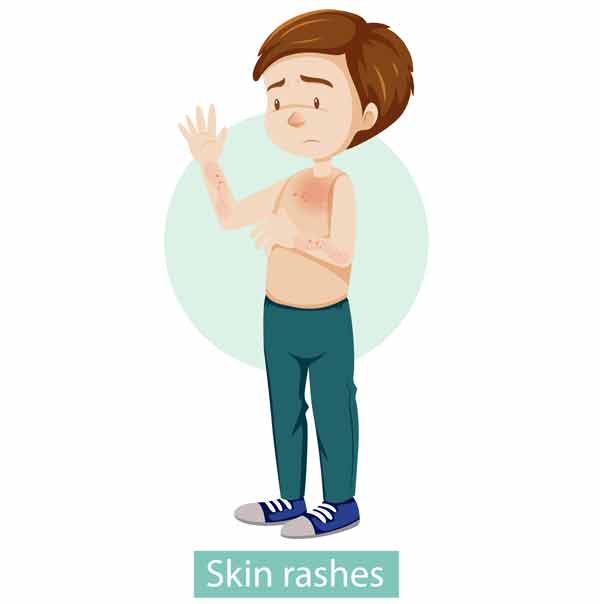Clinical Specialization | Dermatitis
Introduction
Dermatitis is skin inflammation that causes redness, itching, dryness, or rash. There are several main types of dermatitis, each with different causes and symptoms. Atopic dermatitis (eczema) is a chronic, itchy rash often linked to allergies or asthma, and it usually starts in childhood. Contact dermatitis happens when the skin reacts to an irritant or allergen, such as soaps, chemicals, or plants like poison ivy.
Seborrheic dermatitis affects oily areas like the scalp, face, and chest. It causes dandruff, redness, and greasy or flaky skin. Nummular dermatitis shows up as round, itchy, dry patches, often on the arms or legs.
Stasis dermatitis is caused by poor circulation, usually in the lower legs, leading to swelling, redness, and skin irritation. Finally, dyshidrotic dermatitis appears as small, itchy blisters on the hands and feet, often triggered by stress, moisture, or allergies.
Causes
Dermatitis is caused by irritants, allergens, genetics, immune reactions, poor circulation, or environmental factors like stress or weather.
Types of Dermatitis
Atopic Dermatitis (Eczema) – A chronic condition often linked to allergies, asthma, or a family history of these conditions. It causes dry, itchy skin, often starting in childhood.
Contact Dermatitis – Occurs when the skin comes into contact with irritants or allergens. There are two types:
Irritant Contact Dermatitis – Caused by exposure to harsh chemicals, soaps, or other irritating substances.
Allergic Contact Dermatitis – Triggered by allergens like poison ivy, fragrances, or certain metals (e.g., nickel).
Seborrheic Dermatitis – Affects oily areas of the body like the scalp, face, and chest. It causes dandruff, redness, and greasy, flaky skin.
Nummular Dermatitis – Characterized by round, coin-shaped patches of irritated, itchy skin. It often appears on the arms or legs.
Stasis Dermatitis – Caused by poor blood circulation, typically in the legs, leading to swelling, redness, and skin breakdown.
Dyshidrotic Dermatitis – Causes small, itchy blisters, usually on the hands and feet. It’s often triggered by stress, allergies, or sweating.

Why You Should Get It Treated
Relieve Discomfort – Reduces itching, burning, and pain that can affect sleep and daily life.
Prevent Skin Damage – Stops scratching from causing thickened skin, open wounds, or scars.
Avoid Infections – Broken skin is prone to bacterial or fungal infections.
Stop It from Getting Worse – Untreated dermatitis can spread, become chronic, or lead to ulcers (especially on the legs).
Improve Skin Appearance – Reduces visible symptoms, which can boost confidence.
Control Flare-Ups – Helps identify and avoid triggers to prevent future outbreaks.
How We Treat Dermatitis
We treat dermatitis with several approaches, depending on the type and severity. Topical steroids are commonly used to reduce inflammation and itching, while topical calcineurin inhibitors are prescribed for sensitive areas, offering an alternative to steroids.
Moisturizers are recommended to hydrate the skin and prevent flare-ups, keeping the skin’s natural barrier intact. Antihistamines may be used to manage itching, particularly at night when symptoms can be worse.
For more severe cases, phototherapy (UV light therapy) can help reduce inflammation and itching. Oral medications like steroids or immunosuppressants are used for severe flare-ups, while antibiotics may be prescribed if an infection develops.
Finally, we provide education by helping you avoid triggers through identification and steering clear of irritants or allergens that could cause flare-ups. Our treatments are personalized to fit each individual’s needs.
For Consultations Call us at (727) 528-0321
What else would you like to do?
Get to know Dr. Carol Sims-Robertson, including her history, her education and her specializations.
See our office’s location, learn about its features and view the image gallery.
See which insurance plans we accept and other important information about how we handle insurance.






